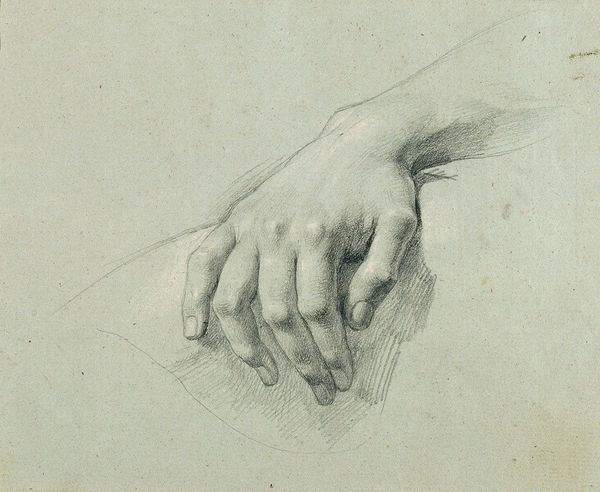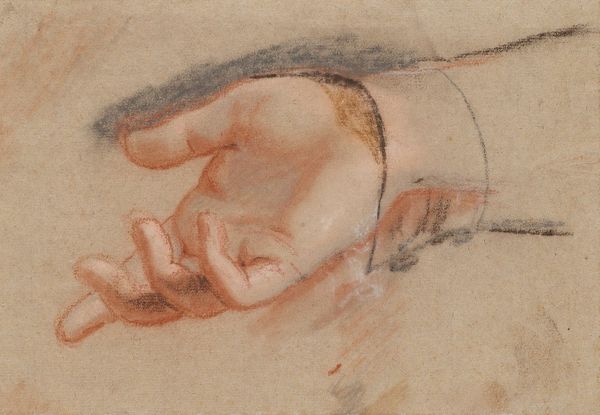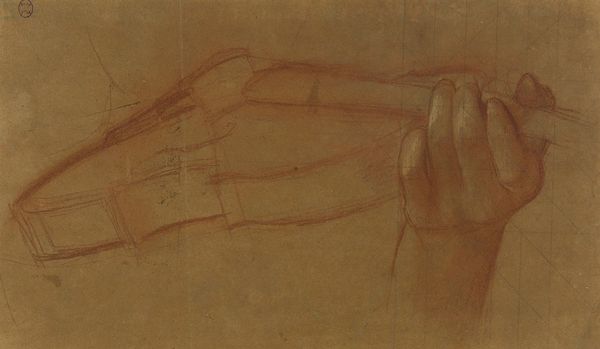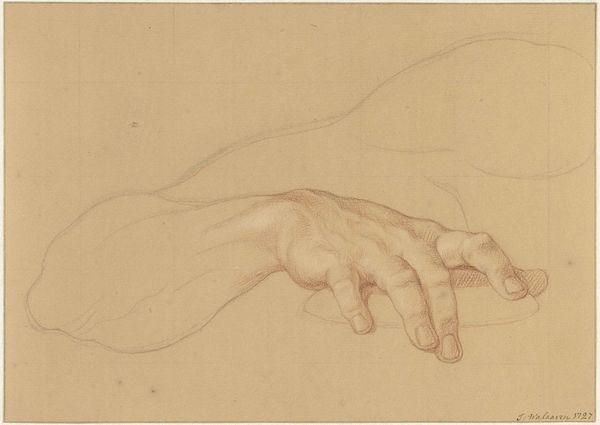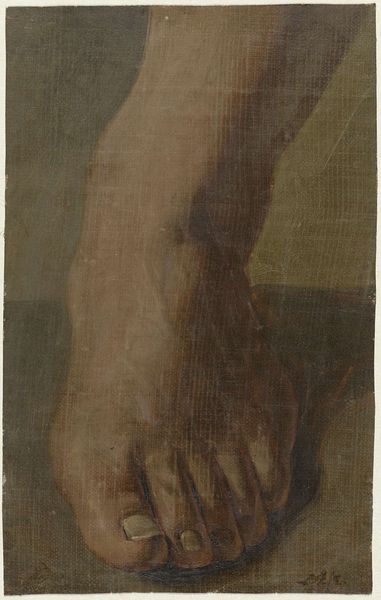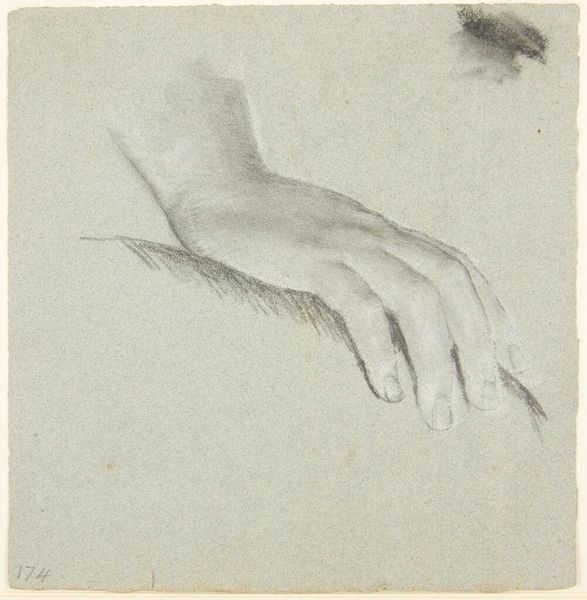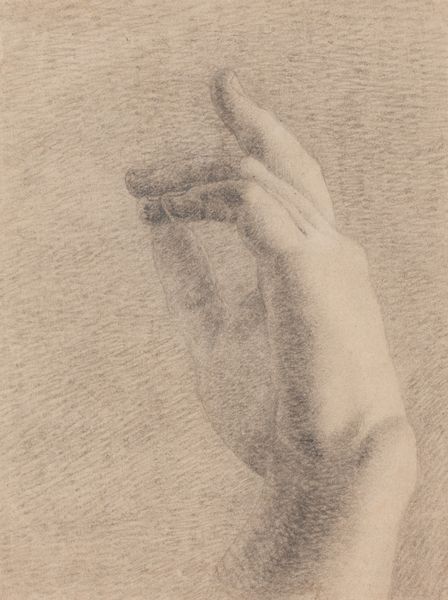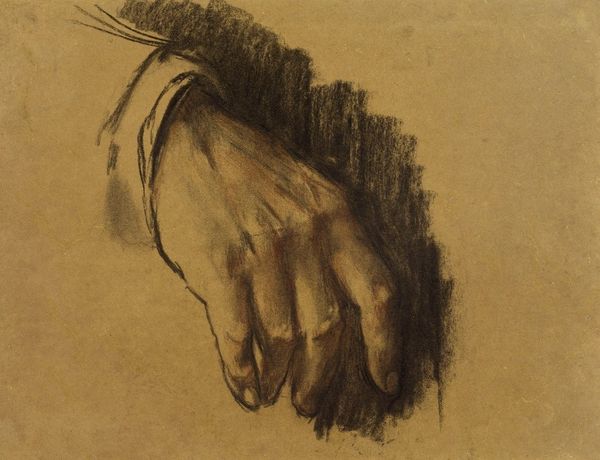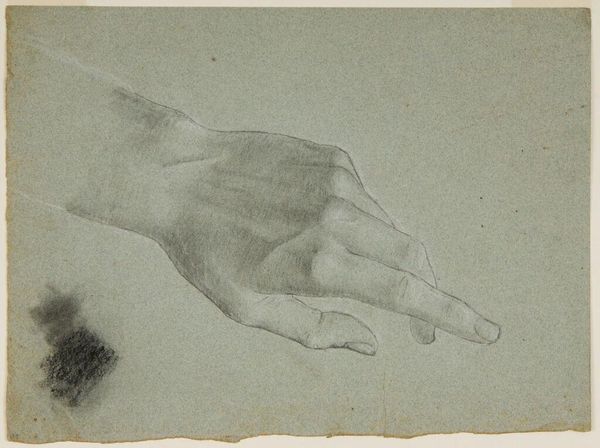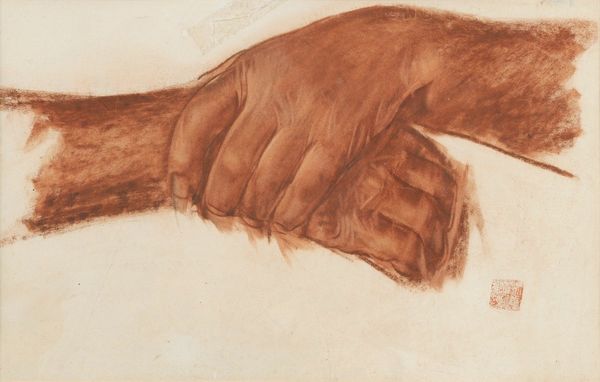
Study of a Right Hand for the Portrait of countess Anna Joachima Danneskiold-Laurvigen 1790 - 1791
0:00
0:00
drawing, pencil, charcoal
#
portrait
#
drawing
#
charcoal drawing
#
romanticism
#
pencil
#
portrait drawing
#
charcoal
Copyright: Public Domain: Artvee
Curator: I am immediately drawn to the vulnerable quality of this drawing— the slightly unsettling way the fingers splay out across the surface. There’s a certain tension held in this singular hand. Editor: Indeed, Jens Juel created this work, a "Study of a Right Hand for the Portrait of Countess Anna Joachima Danneskiold-Laurvigen" between 1790 and 1791. The piece employs charcoal and pencil on paper and anticipates its final role in a full portrait. These preparatory studies helped Romantic painters such as Juel fully express personality through very careful representation. Curator: It’s so fragile, this rendering. See how lightly the charcoal dusts the page, leaving ghostlike trails. There’s this air of transience. As a study, it’s a snapshot of a thought, of an experiment in form and emotion, before it solidified into the Countess's representation. Editor: And the social function of the completed portrait also is critical, of course. The full rendering and the Countless' public-facing image in court. Studies like this enabled Juel, as a Romantic painter, to simultaneously express the Countess' humanity and reflect the values and expectations tied to her societal position. It’s about power and performance, where art helps negotiate the dynamics between visibility and lived experiences. Curator: Power, certainly. But the tenderness in the study resists pure performance. Look how the delicate strokes suggest the yielding of soft tissue under the subtle weight of rings, of perhaps a lifetime of social engagements, shaping the form in tangible ways. It has something of that old master gravitas. It evokes emotion in an incredibly potent way, all on its own. Editor: I think you hit the nail on the head—it certainly possesses both an immediacy as an art object but also illuminates the social and institutional dynamics influencing its creation. Seeing both narratives provides the richer, more insightful understanding of art's significance. Curator: I will now look for this when seeing completed Romantic portraiture. All it took was an artist's keen rendering of a hand.
Comments
No comments
Be the first to comment and join the conversation on the ultimate creative platform.
